- Home
- US Small Business Tax Compliance
- Self-Employment Income
U.S. Self-Employment Income and Taxes
 Self Employment Income and Taxes
Self Employment Income and Taxes
by L. Kenway BComm CPB Retired
This is the year you get all your ducks in a row!
WHAT'S IN THIS ARTICLE
Overview Self Employment Income | Business Entities & EIN | Constructive Receipt Doctrine | EIN | Estimated Tax Payments | Standard Mileage Rates & FAQ | Deemed Depreciation Rates & FAQ | Meals & Entertainment
NEXT IN SERIES >> Self-Employment Taxes
Published November 2010 | Revised January 7, 2025
If you're earning income through self-employment in the United States - whether as a freelancer, independent contractor, or small business owner - you're entering a world with very different tax rules than traditional employees.
Yes, running your own business offers independence and opportunities. It also comes with new IRS tax obligations you need to learn. How well you understand and learn these obligations affects whether your business will be a success or a failure.
This chat provides the basic information you need to get you started on the right foot.
Advertisement
Highlights Of This Post
Introduction
✔︎ Why you want to know how self-employment income and taxes are related
Understanding Self-Employment Income
✔︎ What is it and what sources of income qualify
Business Entitie and Their Impact on Self-Employment
✔︎ What Business Entity is Best For You
✔︎ Why you want an Employment Identification Number (EIN)
Constructive Receipt Doctrine
✔︎ What is it and how it impacts reporting income
✔︎ Constructive Receipt vs. GAAP Accounting
✔︎ Restrictions or Limitations on the Doctrine of Constructive Receipt
Tax Obligations for the Self-Employed
✔︎ Estimated Tax Payments for Self-Employed
Why you need to make them
How to calculate them
What is Form 1040-ES?
Some Deductions and Expenses Available to Self-Employed Individuals
✔︎ Standard Mileage Rates - 2011 to 2025
✔︎ Deemed Depreciation Rates - 2010 to 2025
✔︎ Meals and Entertainment - What's Deductible, What's Not
Summary
✔︎ Takeaways
✔︎ Further Reading and Related Topics
Learn about Self-Employment Taxes (SICA & Form 1040 Schedule SE )
Learn the U.S. Rules for Business Use of Your Car
Learn about Overnight Business Trip Per Diem Meal Allowances
Learn about the Simplified Home Office Deduction
Learn the impact of the Reformed Qualified Business Income (QBI) Deduction*
Additional Resources
My Recommendations
* The 2018 Tax Reform of QBI is set to expire after 2025 unless Congress extends it.
Help Getting All Your Ducks In A Row
Self-Employment Series
Understanding Self-Employment Income
Self-employment income is money you earn from working for yourself rather than as an employee for someone else. This includes income from side hustles, selling products or services online, freelancing, consulting, running your own business, or working as an independent contractor. Unlike traditional employment where your employer withholds taxes from your paycheck, self-employed individuals are responsible for managing their own tax obligations.
These are the obligations that are your responsibility once to you choose to be self-employed:
- You are responsible for both portions of the Social Security and Medicare taxes.
When you were an employee, your employer paid half of these taxes. Once you become self-employed, you have to pay both the employer and employee portions of these taxes. That equals about 15.3% of your net (not gross) earnings.
- There is no automatic tax withholding.
As there is no automatic withholding of tax when you earn self-employment income, you must estimate and pay your own taxes quarterly. If you fail to remit, you can expect the IRS to assess penalties and interest. Poor planning when you are self-employed can lead to some very unexpected and possibly large tax bills.
- There are different tax rules for self-employed deductions and expenses.
You can deduct legitimate business expenses. Understanding and learning which deductions are allowable helps reduce your tax liability. Strict documentation requirements is an essential part of being able to claim self-employment deductions. If you dislike paperwork, you may want to reconsider whether self-employment is the right choice for you.
- Self-employment income impacts your personal finances.
It is your responsibility to budget for your self-employment taxes throughout the year. Being self-employed may affect your ability to qualify for various loans or mortgages. You can expect your decision to become self-employed to also influence your retirement planning and your Social Security benefits.
Understanding these self-employment basics will help you maintain proper records, avoid tax surprises, make informed business decisions while you map out both your personal and business finances now and in the future.
Here are eight things you need to have a grasp of when you become self-employed:
- Definition: Self-employment income is the earnings you receive from a trade or business in which you actively participate. This includes income from sole proprietorships, partnerships, and some types of corporations where you're actively involved in the management.
- Tax Reporting: You'll report your self-employment income on Schedule C (Form 1040), where you'll list your income and allowable deductible expenses to determine your net profit or loss. This net amount is what you'll use to calculate your self-employment taxes.
- Self-Employment Tax: You are responsible for paying self-employment taxes, which covers Social Security and Medicare. The self-employment tax rate is currently 15.3% of your net earnings (12.4% for Social Security and 2.9% for Medicare).
- Deductions: One key advantage of self-employment is the ability to deduct allowable business-related expenses. These can include office supplies, vehicle expenses, travel expenses, home office deductions, and more. These legitimate deductions reduce your taxable income and, consequently, your tax liability.
- Estimated Taxes: Because you're self-employed, taxes aren't withheld from your self-employment income as they would be with a regular paycheck. Instead, you may need to make quarterly estimated tax payments to cover your federal income tax and self-employment tax due.
- Record Keeping: It's imperative to maintain good records of all your business transactions to support your self-employment income and deductions you report. It not only protects you if the IRS questions amounts on your tax return; it also makes tax filing easier and more accurate. Record keeping is absolutely necessary if you want to pass any future income tax audits.
- Retirement Plans: As a self-employed individual, you have access to certain retirement plans that can provide tax advantages, such as a SEP IRA, SIMPLE IRA, or Solo 401(k).
- Health Insurance: You can deduct health insurance premiums as an adjustment to income, which can lower your overall tax bill.
Remember, tax laws can be complex, and it's always a good idea to consult with a tax professional who can provide advice tailored to your specific situation while ensuring you have complied with all tax requirements. This chat is just to give you some talking points to discuss with your accountant about your self-employment income.
Good To Know
Which Business Entity Is Best For You?

1. Sole Proprietors' self-employment income (net earnings) are subject to self-employment tax and must make quarterly estimated tax payments. You are NOT an employee which means you take a draw. Incorporating doesn't make sense for everyone, especially if the corporation will be under capitalized. Small Business Administration (SBA) says "Sole proprietorships can be a good choice for low-risk businesses and owners who want to test their business idea before forming a more formal business.".
2. C-Corp shareholders must be a working employee to receive compensation that is restricted to a reasonable amount*. The corporation pays half of the payroll taxes. Double taxation may occur if dividends are issued. SBA says SBA says "[C] Corporations can be a good choice for medium- or higher-risk businesses, those that need to raise money, and businesses that plan to "go public" or eventually be sold.".
2. S-Corp distributions to shareholders (not to be confused with payroll earnings) are NOT subject to self-employment tax. However all owners must be on the payroll and receive a reasonable amount* of compensation which is subject to payroll taxes. It should be your main source of income. You are only allowed to take losses up to your basis. Negative basis is treated as a non-deductible loss. "S corps can be a good choice for a businesses that would otherwise be a C corp, but meet the criteria to file as an S corp.".
The criteria to file as an S corp are:
- Be a domestic corporation
- Have only allowable shareholdersMay be individuals, certain trusts, and estates andMay not be partnerships, corporations or non-resident alien shareholders
- Have no more than 100 shareholders
- Have only one class of stock
- Not be an ineligible corporation (i.e. certain financial institutions, insurance companies, and domestic international sales corporations).
Audit Ready
The IRS audits this corporate structure to ensure working shareholders are not trying to minimize payroll tax by paying too low a salary.
Want to get audited? Don't pay yourself any compensation!
*Reasonable amount is defined as an amount you would pay an arm's length person for doing the same job.
Source: SBA
The Bookkeeper's Tip
A Good Bookkeeping Practice
Employment Identification Number (EIN) - Why You Want One
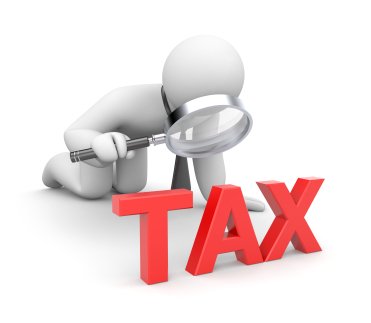
There are three tax ID numbers in the U.S.
- Your Social Security Number (SSN) is used to record your earnings and determine your eligibility for Social Security benefits and certain government services. A SSN identifies a person. The equivalent of a SSN in Canada is the Social Insurance Number (SIN).
- Every business, including sole proprietors, need an Employer Identification Number (EIN) to conduct business in the U.S. An EIN identifies a business. The equivalent of an EIN in Canada is a CRA Business Number (BN).
- A U.S. Individual Taxpayer Identification Number (ITIN) is a tax processing number the IRS issues to individuals who do not have and are not eligible for a SSN. The equivalent of an ITIN in Canada is an Individual Tax Number (ITN).
Why You Want an EIN
Earning self-employment income means that come January each year, you will begin receiving your 1099 forms in the mail or by eMail. With identity theft on the rise, here is something you should put on your to-do list.
"Consider obtaining an Employer Identification Number from the IRS for your business, even if you are a sole proprietor. The last thing you want is to send your Social Security Number to every company that you do work for and to have your SSN plastered across the front of every 1099-NEC form that is sent to you in January." This tip comes from TaxReceipts.com. A great site to visit. They talk tax in plain English.
The Tax Law Doctrine of Constructive Receipt
Information About Your Self-Employment Income You Need To Know
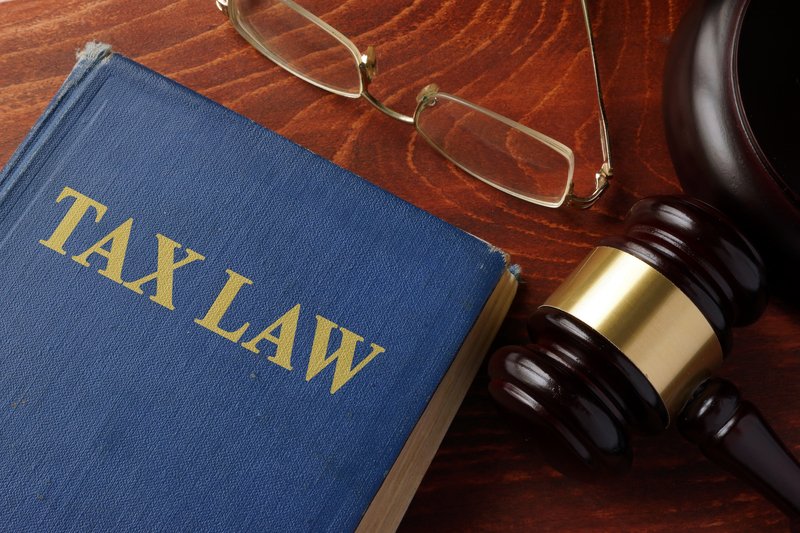
It is important for a small business owner to understand the concept of 'the tax law doctrine of constructive receipt', as it pertains to how self-employment income is reported and taxed if your business uses the cash-basis accounting method.
Tax Law Doctrine of Constructive Receipt (Treasury Regulation 1.451-2(a))
This is a tax principle used primarily in cash-basis accounting, which affects how income is recognized. Under this doctrine, income is considered received when it is credited to an individual's account, set apart, or otherwise made available to be drawn upon, even if it's not actually in hand. Essentially, it's about when you have control over the money.
The doctrine of constructive receipts is defined in the regulations but was conceived by the courts to test realization of income. It prevents a cash basis taxpayer from selecting the year in which income will be reported. Its purpose is to prevent tax avoidance.*
This concept is essential for cash-basis taxpayers to understand so as to prevent them from arbitrarily deferring income recognition (and thus taxes) to a future tax year. Constructive receipt of self-employment income ensures that income is recognized and taxed in the year it is made available, not necessarily when it is actually received or cashed.
Why It Matters:
- Timing of Income: Understanding this doctrine helps you recognize when income should be declared. It affects the tax year in which income is reported, which can impact your tax planning and cash flow management.
- Cash vs. Accrual Basis: Many small businesses use the cash basis of accounting, which aligns with the constructive receipt doctrine (but not GAAP). If income is made accessible to you, it's considered received.
Here's an IRS example: "If the postal service tries to deliver a check to you on the last day of the tax year but you are not at home to receive it, you must include the amount in your income for that tax year. If the check was mailed so that it could not possibly reach you until after the end of the tax year, and you could not otherwise get the funds before the end of the year, you include the amount in your income for the next year." - Tax Planning: Awareness of when income is constructively received allows you to plan effectively for tax obligations, potentially deferring income or accelerating expenses to optimize tax positions.
- Avoiding Penalties: Misreporting income due to a misunderstanding of this concept can lead to penalties and interest. Properly understanding constructive receipt ensures compliance with tax regulations.
- Revenue Recognition: Knowing when to recognize income under this doctrine ensures accurate financial reporting, which is vital for analyzing the business’s performance and attracting potential investors or lenders.
For these reasons, being familiar with the doctrine of constructive receipt is crucial for managing your business finances and tax responsibilities effectively. It’s often beneficial to consult with a CPA or tax professional to ensure a thorough understanding and proper application of this concept in your specific business context.
Audit Ready
When accounting for self-employment income, it is important to understand the constructive receipt principle.
Under the doctrine of constructive receipts, cash basis taxpayers (as opposed to accrual basis taxpayers) are generally not permitted to receive/write postdated or predated cheques. This is because the most significant aspect of constructive receipt is related to actual control over the funds by the end of the tax year. If you have control over those funds before the year ends, they may be considered income in that year, regardless of the date on the check. Courts have generally emphasized access to funds over the notation of the date.
*Source: Barriers to the application of the constructive receipt doctrine by Knight, Lee, G, Knight, Ray A. published in Tax Executive on January 1, 1989
References: Legislative Commission on Pensions and Retirement - BackGround Information on Constructive Receipt Federal Income Taxation Problem; IRS What is Taxable and Nontaxable Income?
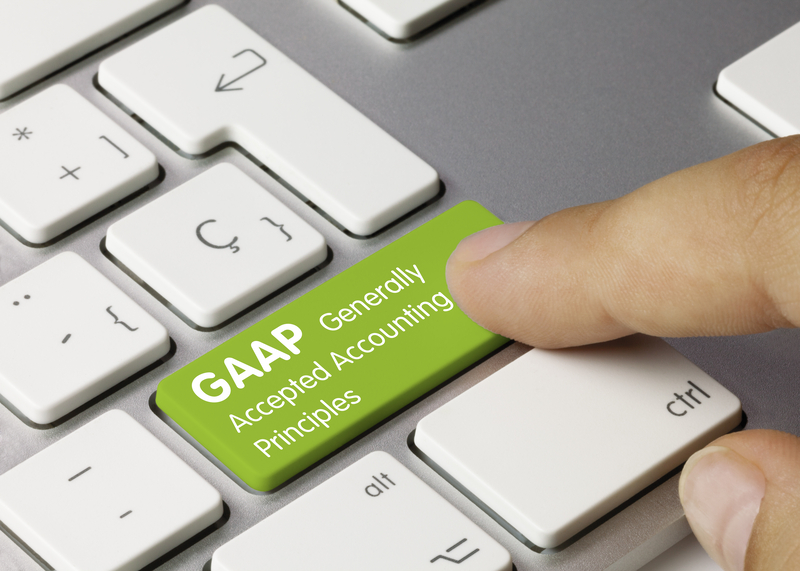
Constructive Receipt vs. GAAP Accounting
As a small business owner, it's important to clarify the doctrine of constructive receipt and how it relates to accounting practices.
Constructive Receipt
The doctrine of constructive receipt is a tax principle used primarily in cash-basis accounting, which affects how income is recognized. Under this doctrine, income is taxable when it is credited to your account or made available to you without restriction, regardless of whether you physically receive the payment. Cash-basis accounting is not GAAP.
- Constructive Receipt and Checks: If you receive a check before the end of the tax year but choose not to cash it until the following year, it is generally considered to be income in the year it was received, due to constructive receipt. The same concept applies to postdated checks; if you have control over the funds, they are considered received.
GAAP Accounting
Generally Accepted Accounting Principles (GAAP) are used in accrual-basis accounting, which is different from cash-basis accounting.
- Accrual Accounting: Under GAAP, income is recognized when earned, regardless of when payment is received. Constructive receipt is not a concept used in GAAP; instead, GAAP focuses on when the obligation to perform (i.e., deliver goods or services) has been fulfilled.
Practical Considerations for Your Business
- Cash Basis vs. Accrual Basis: Determine whether your small business is using cash-basis or accrual-basis accounting, as this will dictate how income is recognized.
- Postdated Checks: While you might be able to delay accounting for income with postdated checks under specific circumstances, consult your tax advisor to understand any legal implications for your tax liabilities.
- Consult a Professional: Because these accounting principles can have significant tax implications, especially regarding year-end tax planning, it’s prudent to work with a CPA who can provide guidance tailored to your specific circumstances.
Takeaway
- Constructive receipt doesn't pertain to GAAP but primarily concerns tax reporting and cash-basis accounting. Understanding these principles is essential for accurately managing your business finances and ensuring compliance with tax laws.
- For tax purposes, for businesses using cash-basis accounting, a cheque is constructively received when it is delivered to the taxpayer ... not when it is cashed.
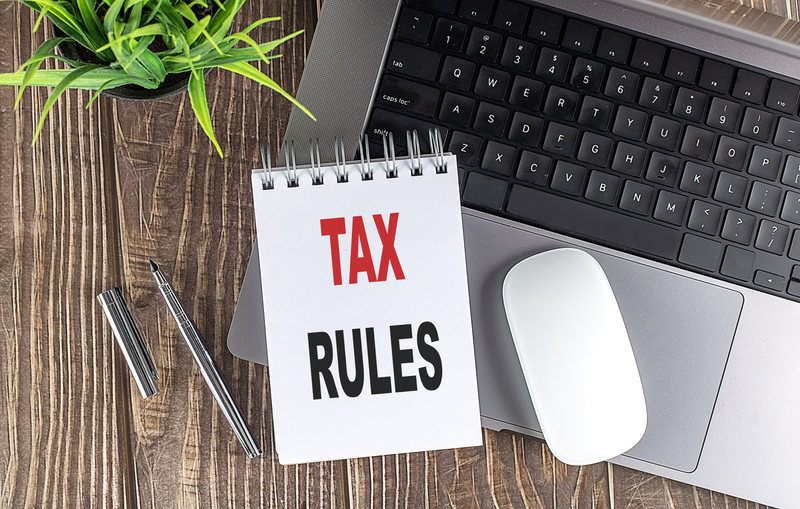
Restrictions or Limitations on the Doctrine of Constructive Receipt
As a small business owner, it's important to understand the subtle distinctions of constructive receipt and the situations where it might not apply. Here are some restrictions or limitations on the doctrine of constructive receipt:
- Substantial Limitations or Restrictions: Self-employment income is not constructively received if there are substantial limitations or restrictions on the taxpayer's control over the receipt of the income. This means that if there are conditions or requirements that need to be met before the taxpayer can actually access the funds, the income would not be considered constructively received until those conditions are satisfied.
- No Physical Receipt: If the taxpayer does not have physical control over the funds or the ability to access them freely and without restrictions by the end of the tax year, the income is not deemed constructively received. For example, if the funds are in an account that is not accessible without a penalty or are held by a third party with a restriction on release, this can delay recognition of income.
- Payment Contingencies or Unresolved Conditions: If there are unresolved contingencies on the payment, such as requirements for the completion of additional work or significant unresolved conditions that need to be satisfied before the taxpayer has the right to receive the income, then constructive receipt does not apply. This could include scenarios where a performance obligation must be completed, or approval from a third party is required before the funds can be accessed.
These limitations ensure that constructive receipt is applied fairly, recognizing income when it is genuinely available to the taxpayer and not merely when expected or owed. If you're experiencing situations where this might be the case, discuss the issue with your CPA so s/he can provide tailored guidance based on your business's circumstances.
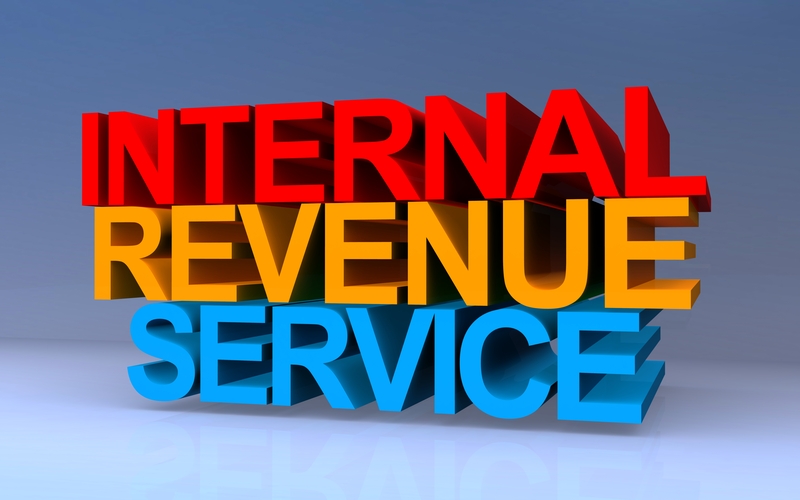
Tax Obligations of the Self-Employed
Estimated Tax Payments On Your Self-Employment Income
This is the method used to pay income taxes on income not subject to withholding taxes ... i.e. your self-employment income.
You need to pay estimated taxes four times throughout the year if your expected tax is $1,000 or more in 2024 after subtracting withholdings and credits ... AND you expect your withholding and refundable credits to be less than the smaller of:
- 90% of your taxes to be shown on your 2025 return ... OR
- 100% of your taxes to be shown on your 2024 return which must cover 12 months.
You may be charged a penalty if you don't pay enough tax by each due date. If you like smoothing out your cash flow over the year, you can setup monthly payments on EFTPS instead of the four required payments.
It's important to note that while you file and pay quarterly, the four periods do not fall every three months. See the table below for how the tax periods are divided.
IRS Form 1040-ES is a worksheet that can help you calculate your estimated payment.
| Tax Type | Tax Period | Form to be Filed | Filing AND Payment Deadline |
|---|---|---|---|
| 1st Tax Installment (3 months) | Jan-Mar | 1040-ES pay thru EFTPS | April 15 |
| 2nd Tax Installment (2 months) | Apr-May | 1040-ES pay thru EFTPS | June 15 |
| 3rd Tax Installment (3 months) | Jun-Aug | 1040-ES pay thru EFTPS | September 15 |
| 4th Tax Installment (4 months) | Sep-Dec | 1040-ES pay thru EFTPS | January 15 next year* |
| Annual Est. Payment Farmers, Fishermen | Jan-Dec | 1040-ES | January 15 next year |
If the 15th falls on a Saturday or Sunday, the filing date and payment move to the Monday.
BOOKKEEPER'S HANDY
REFERENCE
Barbara Weltman, attorney and author, wrote an excellent article for SBA.gov titled "5 Traps in Paying Estimated Taxes" (no longer available).
The article discussed these five traps:
- Failing to have cash on hand.
- Not covering all tax obligations.
- Believing each quarterly payment falls evenly.
- Paying too much, too early.
- Reporting the payment under the SSN of the wrong spouse.
*You don't need to pay the January 15 estimated tax payment if you file your 2024 tax return
with taxes due by January 31, 2025. However, if you do need to make a
payment, best practice is review your estimated earnings and payments
made to date. Adjust your fourth payment to ensure you aren't
under paying or over paying your tax. IF you choose to write a cheque rather pay online through EFTPS ... although why you would choose this payment method is beyond me ... the cheque is made payable to United States Treasury.
BOOKKEEPER'S HANDY REFERENCE
Barbara Weltman, attorney and author, wrote an excellent article for SBA.gov titled "5 Traps in Paying Estimated Taxes" (no longer available).
The article discussed these five traps:
- Failing to have cash on hand.
- Not covering all tax obligations.
- Believing each quarterly payment falls evenly.
- Paying too much, too early.
- Reporting the payment under the SSN of the wrong spouse.
See the IRS Estimated Taxes Guide for more small business information on estimated taxes located on their website by entering "Estimated Taxes" into the search box. The IRS website path is Home> File> Business and Self-employed> Small business and self-employed> Business taxes> Estimated Taxes.
There is also a good small business tax information article on Estimated Tax 101 at https://fairmark.com/general-taxation/estimated-tax/estimated-tax-101/. It walks you through the process and explains how to decide what is the best way for you to calculate your estimated taxes.
Why is Form 1040-ES important to a self-employed individual in the U.S.?
Unlike employees who have taxes withheld from their paychecks, self-employed individuals must proactively pay their taxes throughout the year using Form 1040-ES. This form helps you calculate and pay your estimated taxes quarterly to avoid penalties.
The IRS requires these quarterly payments if you expect to owe $1,000 or more in taxes for the year. These payments cover (i) income tax on your self-employment earnings and (ii) self-employment tax (Social Security and Medicare).
Failing to make these quarterly payments can result in significant penalties, even if you pay your full tax bill by April 15. That's why Form 1040-ES is essential for proper tax planning and compliance.
Due dates for Form 1040-ES payments are:
- - April 15 (for January-March)
- - June 15 (for April-May)
- - September 15 (for June-August)
- - January 15 (for September-December)
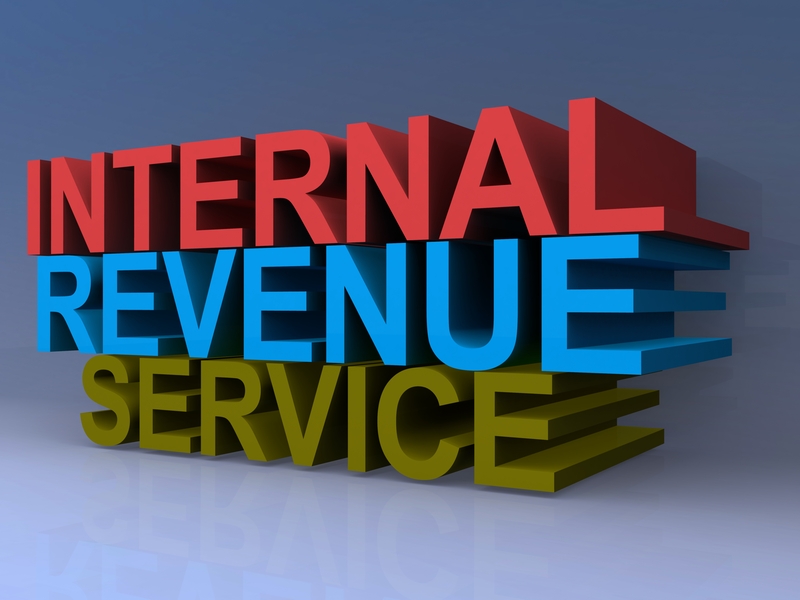
Three Self-Employment Deductions and Expenses
1. 2024 and 2025 Standard Mileage Rates
Source: Notice IR-2024-312, IR-2023-239, IR-2022-234, IR 2021-251, IR 2020-279, IR 2019-215
Normally released sometime in December each year; updated December 19, 2024
June 9, 2022 --- In a rare event, the 2022 standard mileage rates were changed midyear to help alleviate the burden of rising costs. 2023 mileage rates are expected to be released in December, 2022.
December 19, 2024 --- The 2025 standard mileage rates were increased by 3 cents to 70 cents per mile driven for business use. 2026 mileage rates are expected to be released in December, 2025.
Earning self-employment income often requires business travel. The IRS allows employees and self-employed individuals to use a standard mileage rate. Here are the mileage rates allowed by IRS.
Table below is cents / mile
| Year | Business Miles Driven*** | Moving / Relocation Purposes | Medical Purposes | Charitable Services |
|---|---|---|---|---|
| 2025 | 70.0* | 21.0** | 21.0 | 14.0 |
| 2024 | 67.0* | 21.0** | 21.0 | 14.0 |
| 2023 | 65.5* | 22.0** | 22.0 | 14.0 |
| 2022 Jul-Dec | 62.5* | 22.0** | 22.0 | 14.0 |
| 2022 Jan-Jun | 58.5* | 18.0** | 18.0 | 14.0 |
| 2021 | 56.0* | 16.0** | 16.0 | 14.0 |
| 2020 | 57.5* | 17.0** | 17.0 | 14.0 |
| 2019 | 58.0* | 20.0** | 20.0 | 14.0 |
| 2018 | 54.5* | 18.0** | 18.0 | 14.0 |
| 2017 | 53.5 | 17.0 | 17.0 | 14.0 |
| 2016 | 54.0 | 19.0 | 19.0 | 14.0 |
| 2015 | 57.5 | 23.0 | 23.0 | 14.0 |
| 2014 | 56.0 | 23.5 | 23.5 | 14.0 |
| 2013 | 56.5 | 24.0 | 24.0 | 14.0 |
| 2012 | 55.5 | 23.0 | 23.0 | 14.0 |
| 2011 Jul-Dec | 55.5 | 23.5 | 23.5 | 14.0 |
| 2011 Jan-Jun | 51.0 | 19.0 | 19.0 | 14.0 |
Standard Mileage Rates Notes
*Suspension of Miscellaneous Itemized Deductions:
The Tax Cuts and Jobs Act (TCJA) suspended miscellaneous itemized deductions for the tax years 2018 through 2025. Exceptions to this suspension include:
- Members of a reserve component of the U.S. Armed Forces,
- State or local government officials compensated on a fee basis,
- Certain performing artists.
See Notice 2019-2 and Notice 2018-42 (modifies Notice 2018-03) for more information.
**Repeal of Moving Expense Deduction:
The TCJA also repealed the moving expense deduction for most individual taxpayers during the same period (2018-2025). The exception is for members of the U.S. Armed Forces on active duty moving pursuant to a military order.
See Notice 2019-2 and Notice 2018-42 (modifies Notice 2018-03) for more information.
*** 1. Mileage Log Requirement:
Maintaining a mileage log is necessary to substantiate the number of miles driven for business purposes. It's important to maintain accurate records of the business miles driven each year as well as keep track of how the standard mileage rate's deemed depreciation may affect your vehicle's basis.
*** 2. Restrictions on Business Standard Mileage Rate:
You cannot use the business standard mileage rate under the following circumstances:
- For vehicles used for hire,
- For more than four vehicles used simultaneously,
- If a Section 179 deduction has been taken for that vehicle,
- After using any depreciation method under MACRS for that vehicle.
The business standard mileage rate applies to cars, vans, pickups, and panel trucks.
*** 3. Additional Deductible Expenses:
While you cannot deduct actual vehicle operating costs with the standard mileage rate, you can deduct:
- Parking fees and tolls related to business,
- The business portion of interest on vehicle loans,
- The business portion of any local or state personal property tax on the vehicle.
Other Notes:
Actual Vehicle Expenses Method:
You always have the option of calculating the actual costs of using your vehicle rather than using the standard mileage rates. Tracking these expenses can be time-consuming, but it may lead to a larger deduction if your vehicle is expensive to operate.
This method allows you to deduct the actual costs of operating your vehicle for business purposes. It includes expenses such as gas, oil, repairs, tires, insurance, registration fees, licenses, and depreciation (or lease payments).
You can choose the method that provides the larger deduction but once you opt for the actual expenses method, you must stick to it for as long as you use that vehicle for business purposes. If you start with the mileage method, you can later switch to actual costs if deemed beneficial, given that the switch complies with certain IRS rules.
Standard Mileage Rate Information:
Historical mileage rates can typically be found on the IRS website. Key in 'standard mileage rates' into the IRS search box to locate it.
Additional Resources:
For more detailed information, IRS Publication 463, Travel, Entertainment, Gift, and Car Expenses, would be helpful.
Takeaway:
The standard mileage rates method is a simpler method (than the actual costs method) where you multiply the number of business miles driven by the IRS standard mileage rate to determine your deduction. It is typically more beneficial if your vehicle operating costs are low, as it simplifies the record-keeping and provides a straightforward calculation.

Standard Mileage Rates FAQ
Let's chat a bit more about standard mileage rates which are a simplified method for calculating vehicle-related business deductions. I've setup this section in a Q&A format that flows from basic concepts to more complex decisions To reflect this, the questions are ordered as follows:
First, I will look at the basic purpose and where to find the rates. Then I'll touch on how the mileage rates are determined and IRS's requirement for a mileage log. Next I'll move onto discussing restrictions and alternative options to the standard mileage rate. I'll close with the impact TCJA had on the rates.
What is the purpose and use of IRS standard mileage rates?
What is the purpose and use of IRS standard mileage rates?
The IRS standard mileage rates provide a simplified way for taxpayers to calculate deductions for the business use of their vehicle, as well as for moving, medical, or charitable purposes (though moving expenses are now limited to active duty military members, due to the TCJA). These rates help streamline record-keeping and avoid the need to keep exact records of actual expenses such as gas, repairs, and maintenance.
Where do you find the latest standard mileage rates?
Where do you find the latest standard mileage rates?
The latest mileage rates are published annually by the IRS, usually at the end of the preceding year. Small business owners can find these rates on the IRS website, specifically in IRS publications like Notice 20XX-XX (the number changes each year), or by searching 'IRS standard mileage rates' online.
To make it easier for you, I included latest standard mileage rates above this FAQ section.
How are mileage rates determined?
How are mileage rates determined?
The IRS sets these rates annually based on studies of the fixed and variable costs of operating an automobile. This includes factors such as fuel prices, insurance costs, and vehicle maintenance costs, which are analyzed to establish fair rates.
Does the IRS require a mileage log?
Does the IRS require a mileage log?
Yes, maintaining a mileage log is essential to substantiate the standard mileage deduction. This log should include date, mileage, destination, and purpose for each trip.
What are the restrictions on using standard mileage rates?
What are the restrictions on using standard mileage rates?
You cannot use the standard mileage rate for a vehicle if:
- You operate vehicles for hire such as taxis or ride-sharing services.
- You operate five or more vehicles at the same time in your business (fleet operations).
- You have claimed a depreciation deduction using a method other than straight-line for the asset’s useful life.
- You have claimed a Section 179 deduction on the vehicle.
- You claimed a special depreciation allowance on the vehicle.
Are there non-standard mileage rates? Is there an alternative to using standard mileage rates?
Are there non-standard mileage rates? Is there an alternative to using standard mileage rates?
The term 'standard mileage rates' mainly refers to the IRS's set figures; there aren't 'non-standard' rates defined by the IRS. However, taxpayers always have the option to calculating actual vehicle expenses instead of using the standard mileage rate. See the notes above for more details on the actual costs method for claiming vehicle expenses.
The decision between the two methods depends on your situation, including how costly it is to operate your vehicle and your preference for record-keeping complexity.
You can choose the method that provides the larger deduction but once you opt for the actual expenses method, you must stick to it for as long as you use that vehicle for business purposes. If you start with the mileage method, you can later switch to actual costs if deemed beneficial, given that the switch complies with certain IRS rules.
What was the impact of TCJA on standard mileage rates?
What was the impact of TCJA on standard mileage rates?
No specific mileage rates were repealed by TCJA, but the contexts in which they could be applied were altered as noted below.
The Tax Cuts and Jobs Act (TCJA) of 2017 made notable changes:
- Moving Expenses: The deduction for moving expenses was suspended through 2025 for taxpayers other than active-duty members of the Armed Forces.
- Employee Business Expense: Miscellaneous itemized deductions, which included unreimbursed employee business expenses, were eliminated for tax years 2018 through 2025, thus affecting mileage deduction for employees.
How do you would choose between using the standard mileage rate or optional rates?
How do you would choose between using the standard mileage rate or optional rates?
Choosing between using the standard mileage rate and actual expense method (optional rates) for deducting vehicle-related business expenses involves considering several factors.
Here's how you might decide:
1. Standard Mileage Rate
- Simplicity: The standard mileage rate is generally easier to calculate and requires less record-keeping. You simply multiply the number of business miles driven by the standard rate set by the IRS for that year.
- Eligibility: This method can be used if you own or lease your vehicle. However, it must be chosen in the first year the car is available for business use. In subsequent years, you can switch to actual expenses but not vice-versa (unless leasing).
- Record-keeping: You still need to keep a mileage log or similar records to show business mileage.
2. Actual Expense Method
- Potentially Larger Deduction: This method may result in a larger deduction if your actual vehicle expenses (gas, oil, maintenance, insurance, depreciation, etc.) are high relative to your business miles.
- Detailed Record-Keeping: You must keep detailed records and receipts for all car-related expenses throughout the year.
- Eligible Expenses: You can include costs like depreciation, repairs, gas, oil, insurance, and other expenses related to operating your vehicle.
3. Factors to Consider
- Annual Mileage: If you drive a lot for business, the standard mileage rate might be advantageous. Conversely, if your vehicle incurs high expenses, the actual expense method could provide a bigger deduction.
- Vehicle Costs: High annual vehicle costs might favor the actual expense method.
- Personal Preference: Consider your comfort level with record-keeping and calculations.
- Consultation: It might be beneficial to consult with a CPA or tax advisor to analyze your specific situation to determine which method maximizes your tax benefit.
The choice between using standard mileage rate or the optional rates depends on your particular circumstances and which method offers the largest deduction while being easiest for you to manage given your record-keeping habits.
2. Deemed Vehicle Depreciation Rates
Let's talk about vehicle depreciation. It is a fundamental concept that bridges standard mileage rates and actual depreciation methods. Understanding this connection helps small business owners make better decisions about their vehicle expense deductions. I have setup this section in a Q&A format with questions ordered as follows:
First, I will define what constitutes a vehicle. Then I will explain deemed depreciation (which is part of the standard mileage rate) and provide IRS's specific rates. Lastly, I will discuss actual depreciation methods (MACRS) and special deductions like Section 179.
What is the IRS's definition of a vehicle?
The IRS defines a vehicle as any car, van, pickup, or panel truck used for transportation.
What is deemed depreciation as it pertains to the mileage deduction?
Deemed depreciation is an implicit component of the IRS standard mileage rate that accounts for vehicle wear and tear. When you use the standard mileage rate for your vehicle, a portion of that rate is considered depreciation. This affects the vehicle’s tax basis upon disposition.
When you use your vehicle for business purposes, the IRS allows you to deduct the costs associated with that usage. You have two primary options: the actual expense method and the standard mileage rate.
- Standard Mileage Rate: The standard mileage rate is a simplified method to calculate deductible business use of a vehicle. It is a per-mile rate set by the IRS each year, intended to cover costs such as fuel, maintenance, repairs, and depreciation.
- Deemed Depreciation: Within that standard mileage rate is an implicit amount intended to cover the depreciation of the vehicle—this is known as deemed depreciation. When you use the standard mileage rate, you don't explicitly track or deduct depreciation separately; it's inherently included.
- Tax Basis Impact: The deemed depreciation affects the vehicle's tax basis when you eventually sell or dispose of it. The tax basis is essentially the original cost of the vehicle, adjusted for factors like improvements or depreciation. When you sell or dispose of the vehicle, you need to account for the total of deemed depreciation to calculate any gain or loss on the sale.
- Calculating Adjusted Basis: When using the standard mileage rate, you reduce the vehicle’s basis by the deemed depreciation amount for each year the vehicle is used for business.
- Sale or Disposal Impact: If you sell the vehicle, you'll compare the adjusted basis to the sale price to determine if there's a gain or loss. If the sale price exceeds the adjusted basis, you may have a taxable gain, part of which could be subject to recapture rules (ordinary income rather than capital gain).
It's important to maintain accurate records of the business miles driven each year and keep track of how the standard mileage rate's deemed depreciation may affect your vehicle's basis. Consulting a tax professional for personalized guidance, especially on transactions involving asset disposal, would be prudent.
What are the deemed depreciation rates as it pertains to the standard mileage deduction?
The IRS provides information on the depreciation component of the standard mileage rates in annual publications or notices released around the time of the new rates. These resources will break down the portion of the mileage rate attributable to depreciation.
By consulting the latest IRS publications, following IRS guidance available online, and utilizing tax software or a CPA, small business owners can access all necessary information regarding the standard mileage rates and associated rules.
Here are the deemed deprecation rates since 2010:
- 33¢/mi.for 2025 [IRS Notice 2025-05]
- 30¢/mi.for 2024 [IRS Notice 2024-08]
- 28¢/mi.for 2023
- 26¢/mi.for 2022
- 26¢/mi.for 2021
- 27¢/mi.for 2020
- 26¢/mi.for 2019
- 25¢/mi.for 2018
- 25¢/mi.for 2017
- 24¢/mi.for 2016
- 24¢/mi.for 2015
- 22¢/mi.for 2014
- 23¢/mi. for 2013
- 23¢/mi. for 2012
- 22¢/mi. for 2011
- 23¢/mi. for 2010
Source: IRS Standard Mileage Rates
What is MACRS?
MACRS, which stands for Modified Accelerated Cost Recovery System, is the current tax depreciation system used in the United States. It allows businesses to recover the cost of certain qualifying property over a specified life by allowing an annual deduction for depreciation. MACRS is typically used for tangible personal property and certain structures placed in service after 1986.
Here are the key points regarding MACRS:
- Depreciation Method: Unlike straight-line depreciation, which spreads the cost of an asset evenly over its useful life, MACRS allows for accelerated depreciation, where larger deductions are taken in the earlier years of an asset’s life. This can be advantageous for businesses looking to maximize their tax deferrals and boost cash flow in the short term.
- Classes and Life: MACRS categorizes assets into different classes based on their expected life, such as 3-year, 5-year, 7-year, etc. Each class follows a set depreciation schedule that determines the rate and duration of depreciation.
- Half-Year Convention: Typically, MACRS uses a "half-year convention," which assumes that assets are placed in service or disposed of halfway through the year. There are exceptions, such as the mid-quarter convention, which applies if more than 40% of total property is placed in service during the last quarter of the tax year.
- Eligible Property: Generally, MACRS applies to tangible personal property and specific real property. Each asset type has precise guidelines defining the length of the recovery period and applicable methods.
- Two Systems: MACRS is divided into two systems:
(i) General Depreciation System (GDS): This is the most commonly used form, allowing for accelerated depreciation over specified asset lives.
(ii) Alternative Depreciation System (ADS): Used for specific types of assets where straight-line depreciation is mandatory or when an asset is used outside of the U.S. This method generally spreads deductions over a longer period compared to GDS.
MACRS is an important part of tax planning and financial management for businesses because it provides a framework to maximize depreciation deductions and manage tax liabilities effectively. It is always helpful to consult with a tax professional or accountant to ensure proper application and compliance with IRS regulations.
Is MACRS similar to CCA in Canada?
Yes, MACRS in the United States and Capital Cost Allowance (CCA) in Canada both serve the same fundamental purpose: they are depreciation systems that allow businesses to recover the cost of capital assets over time for tax purposes. However, there are some differences in how these systems are implemented.
Similarities:
- Purpose: Both systems aim to provide businesses with a way to depreciate their capital assets over a period of time to reflect wear and tear, obsolescence, or usage.
- Categories or Classes: Both MACRS and CCA categorize assets into different classes or categories, which determine the rate and duration of depreciation.
- Accelerated Depreciation: Both systems allow for forms of accelerated depreciation, enabling businesses to claim a larger proportion of the depreciation in the earlier years of an asset's life.
Differences:
- Specific Rules and Rates: MACRS uses specific percentage tables and lives for different asset classes, while CCA uses a system of different classes each with a specified percentage rate applied to the undepreciated balance, commonly known as the declining balance method.
- Depreciation Method: MACRS frequently uses a combination of declining balance and straight-line methods, while CCA uses a straight declining balance method. Also, MACRS applies different conventions (such as the half-year convention), while CCA typically applies a half-year rule, only allowing half the claim in the year of acquisition.
- System Complexity: MACRS can be seen as more complex than CCA due to its specific tables and conventions. CCA, while comprehensive, includes fewer adjustments and may be considered more straightforward in some aspects.
- Governance: MACRS is governed by the IRS under the U.S. tax code, while CCA is governed by the Canada Revenue Agency (CRA) under the Income Tax Act in Canada.
Both systems are tailored to the specific tax regulatory environments of their respective countries and reflect the priorities and policies of their tax authorities. Businesses usually rely on accountants or tax professionals to utilize these systems effectively.
What is a Section 179 deduction?
The Section 179 Deduction is a provision in the U.S. tax code that allows businesses to deduct the full purchase price of qualifying equipment and software purchased or financed during the tax year. This deduction is designed to encourage businesses to invest in their growth by making capital expenditures more affordable.
Here are key features of the Section 179 Deduction:
- Immediate Expense Deduction: Normally, when a business buys equipment or property, it would depreciate the asset over several years. Section 179 allows businesses to immediately deduct the full cost in the year of purchase, up to a specified limit.
- Annual Limit: The IRS sets a maximum dollar amount that can be deducted under Section 179 each year. This limit can change based on tax legislation, so it’s important to check for the current year's cap.
- Phase-out Threshold: Once a business’s total purchases reach a certain threshold in a tax year, the Section 179 deduction begins to phase out, dollar for dollar. This phase-out is designed to target small to mid-sized businesses, meaning that very large purchases by larger companies are not entirely eligible for the Section 179 Deduction.
- Qualifying Property: The deduction can be used for tangible personal property, such as machinery, equipment, off-the-shelf software, as well as vehicles (with restrictions). Notably, the property must be used more than 50% for business to qualify.
- Purchase and Use Requirement: To qualify for the deduction in a given tax year, the property must be both purchased and put into service within that year.
By using Section 179, businesses can significantly reduce their taxable income, thus reducing their overall tax liability. It's a useful tax tool for companies looking to invest in their operations and upgrade their resources in a tax-efficient manner. Always check the most current IRS guidelines or consult with a tax professional to ensure your business is compliant and you are able to maximize this benefit.
Is it better to take section 179 or bonus depreciation?
This is not my area of expertise. It's usually beneficial to chat with your tax advisor specifically about your situation to ensure you make the most tax-efficient decision for your business. S/he can help you consider other factors like state tax implications and specific changes in tax laws.
That said, here is my understanding of whether it is better to take section 179 or bonus depreciation. Hopefully it helps you to know what questions to ask your tax advisor:
Section 179 Deduction
- Immediate Deduction: Section 179 allows you to deduct the full purchase price of qualifying equipment or software in the year it's placed in service.
- Limits: There's a maximum deduction limit (which can change annually) and the total amount of purchases you can deduct is also capped.
- Business Profit Limitation: You can only use Section 179 if your business has taxable income. You can't create or increase a loss using Section 179.
- Flexibility: You can choose which assets to apply it to and how much of the cost you want to deduct, allowing more control over your annual deductions.
- Eligibility: Can be used for both new and used equipment.
Bonus Depreciation
- Percentage Deduction: Bonus depreciation allows you to deduct a percentage of the asset's cost in the first year (100% for qualified property acquired and placed in service after Sept. 27, 2017, and before Jan. 1, 2023).
- No Income Limitation: Unlike Section 179, bonus depreciation can be used to create or increase a net operating loss. This is helpful if your business is not profitable.
- No Dollar Limit: There is no maximum dollar limit or spending cap on total equipment purchases unlike Section 179.
- Automatic Application: Unless you specifically elect out, bonus depreciation applies automatically.
- Eligibility: Applies to new and used equipment (for property acquired and placed in service after Sept. 27, 2017).
- Phase Out: Bonus depreciation is phasing out, having reduced to 80% for 2023 and 60% for 2024. It will further decline to 40% for 2025, 20% for 2026, and 0% for 2027 and beyond.
Considerations
- Current vs. Future Tax Liability: If you want to minimize your current year's tax liability and are confident in continuing profits, Section 179 might be more appealing. If your business fluctuates or is currently not profitable, bonus depreciation might be beneficial.
- Tax Planning Strategy: If you expect higher income in future years and prefer to defer some deductions to offset future income, planning around these two methods can help balance taxable income.
- Business Structure: Pass-through entities might benefit differently than C-corporations.
- State Tax Implications: Some states don't conform to federal bonus depreciation rules.
- Mix and Match: Depending on your purchases, you might be able to use a combination of both, applying Section 179 up to your desired limit and using bonus depreciation for the remainder.
Takeaway
As a small business owner, deciding between Section 179 and bonus depreciation depends on your specific tax situation and business needs. Both can offer significant tax benefits by allowing you to deduct the cost of qualifying property, but they have different rules and advantages.
It's worth noting that the percentage for bonus depreciation can change over time. While it has been 100% for many assets in recent years, this rate is set to decrease in the coming years unless new legislation is enacted.
As I mentioned, this is not my area of expertise. You should chat with your tax advisor specifically about your situation to ensure you make the most tax-efficient decision for your business. S/he can help you consider other factors like state tax implications and specific changes in tax laws.
3. Meals and Entertainment - What's Deductible, What's Not
 What's deductible? What's not?
What's deductible? What's not?As a small business owner in the U.S., handling meals and entertainment expenses correctly is crucial for tax purposes. It is a frequently audited area, so it is important to know the rules. It is a bit complex, so here's a detailed breakdown:
General Rules
- Ordinary and Necessary Expense (Sec. 162(a)): For a meal or entertainment expense to be deductible, it needs to be ordinary (common and accepted in your trade or business) and necessary (helpful and appropriate for your business).
- Business Purpose (Sec. 274(a) and Notice 87-23): There must be a clear business purpose for the expense, and it needs to be directly related to the active operations of your business.
Meals have strict deductibility requirements
- Business Discussion: A deductible meal must involve either a business discussion during the meal or directly before or after it. Keep records of the nature of the discussion. (Sec. 274(a) and Notice 87-23)
- 50% Deduction Limitation (Sec. 274(n)(1)): Generally, you can deduct 50% of the cost of business meals if the expense is ordinary, necessary, and was not lavish or extravagant (Sec. 274(k)).
- Taxes and Tips Included in a Meal Receipt: When calculating the total cost of a meal for deduction purposes, you may include taxes and tips as part of the meal expense. These costs are part of the ordinary expense incurred during a business meal and are subject to the same deduction limitations as the meal itself (e.g., 50% unless an exception applies).
- Parking: Amounts paid for parking at a restaurant are subject to the 50% limit.
- Substantiation Requirement (Sec. 274(d)): Substantiation means you must provide adequate evidence to support the deduction of meal expenses. This substantiation requirement ensures that each meal expense is legitimate and connected to business activities, allowing it to qualify as a deductible expense under the tax code. It involves detailed record-keeping. Typically, you need to keep receipts, and the documentation should include:
(i) Amount: The cost of the meal;
(ii) Time and Date: When the meal took place;
(iii) Location: Where the meal was consumed;
(iv) Business Purpose: A brief explanation of the business reason for the meal, such as the topics discussed or the nature of the meeting; and
(v) Attendees: The names of the individuals who attended the meal and their relationship to the business. - Taxpayer’s Presence Requirement (Sec. 274(k)): For a meal expense to be deductible, the taxpayer or a representative of the taxpayer (such as an employee or an authorized agent) must be present at the meal.
This requirement was put in place to ensure that the meal actually has a business purpose. The presence of the taxpayer or their representative indicates active involvement in the meal as part of conducting business, not just providing a meal for an unrelated party.
Keeping thorough records and staying organized are key aspects of meeting the substantiation and presence requirements. - Exceptions 100% Deductibility: Certain meal expenses are exempt from the 50% disallowance and can be 100% deductible such as meals provided for the convenience of the employer or those related to recreational or social activities primarily for ordinary employees. See 'Disallowance Rules' below for further details.
- 100% Deduction (Temporary COVID-19 Relief): Under the 2021 Consolidated Appropriations Act passed for COVID-19 relief, there is a temporary allowance for a 100% deduction on business meals provided by a restaurant for expenses paid or incurred in 2021 and 2022. This was a temporary measure.
- Restaurants Only: To take advantage of the 100% deduction (if applicable), meals must be from a restaurant, defined as businesses that prepare and sell food/drinks to retail customers for immediate consumption.
Entertainment is generally are fully nondeductible
- Definition: For tax purposes, "entertainment" generally refers to any activity or an item that provides amusement or recreational enjoyment. Historically, the IRS definition included a wide range of activities. However, recent tax reforms have further clarified what qualifies or doesn't qualify as deductible entertainment expenses.
Entertainment Definition Pre-Tax 2017 Cuts and Jobs Act
In the past, the definition covered:
(i) Activities such as nightclubs, cocktail lounges, theaters, country clubs, golf and athletic clubs, sporting events, and similar venues.
(ii) It also included the costs related to the provision of entertainment such as tickets, greens fees, transportation, lodging (if necessary), and any other costs attributable to entertainment.
Changes Post-Tax Cuts and Jobs Act (2017)
Under the Tax Cuts and Jobs Act (TCJA) of 2017, the deduction for entertainment, amusement, or recreation expenses has generally been eliminated. This means that most expenses that would fit into the "entertainment" category can no longer be deducted from your business taxes. However, there is an allowance for meals, as meal expenses that are directly related to the taxpayer’s business activities can still be 50% deductible under certain circumstances.
Key Entertainment Considerations
Exception for Meals: The cost of meals associated with entertaining clients or stakeholders may still be deductible at 50%, as long as business is conducted during the meal and proper documentation is provided.
Entertainment Facilities: Expenditures related to owning or operating facilities for entertainment purposes are not deductible.
Takeaway
Prior to 2017, 'entertainment' was a broad category. The Tax Cuts and Jobs Act narrowed the scope considerably for deductible expenses, primarily removing the deduction for most entertainment activities. Always keep detailed and organized records. - Non-Deductible: Under the Tax Cuts and Jobs Act of 2017, entertainment expenses are generally non-deductible. This includes activities considered amusement, entertainment, or recreation.
- Exceptions: Certain expenses incurred for the benefit of ordinary employees (like holiday parties) might be fully deductible, but these are specific and should be verified they are allowable deductions. (Regs. Sec. 1.274-12(c)(2) (iii)). The Tax Advisor explains that "Free food and beverages provided in a break room available to all employees do not qualify and will be subject to the 50% disallowance rule (Regs. Sec. 1.274-12(c)(2)(iii)(B)(3))."
- Business Meals During Entertainment: If you provide meals during an entertainment event, only the meals can be deductible—subject to the 50% limit—and not the entertainment portion. These should be separately listed or invoiced to ensure clarity.
- Non-Deductible Expenses:
(i) Lavish or Extravagant: Meals or entertainment considered lavish or extravagant are non-deductible.
(ii) Club Memberships: Dues for social, athletic, or sporting clubs are non-deductible.
Disallowance Rules
- Documentation: Maintain proper documentation, including receipts, the amount spent, date, location, business purpose, and those in attendance for all meals and entertainment expenses. The IRS requires adequate records to substantiate deductions.
- Substantiation: Ensure you provide substantive evidence if audited. This includes invoices, receipts, and a record of the business purpose.
- 50% Deduction Limitation (Sec. 274(n)(1)): Only 50% of otherwise allowable meal expenses are deductible as business expenses.
- Transportation costs: The cost of traveling to and from the meal are not subject to the 50% disallowance rules unless the business owner uses the per diem method for travel expenses.
Disallowance Rules Exceptions
- Certain Meal Expenses: Certain meal expenses are exempt from the 50% disallowance and are 100% deductible. These exceptions typically include:
(i) Meals provided on the business premises to employees for the employer's convenience may qualify for full deductibility.
(ii) Meals associated with substantial business meetings including company-wide trainings, or conferences at which business matters are discussed may qualify.
(iii) Certain minimal (minor) fringe benefits, such as snacks provided in a break room, are fully deductible. This is referred to as 'De Minimis Fringe Benefits' (Sec. 132(e)).
(iv) If a business fully reimburses an employee for meal expenses incurred on its behalf, and the business treats the amount as reimbursed under an accountable plan, the business may be able to fully deduct these meals.
(v) Meals associated with a qualifying charitable sporting event may also be fully deductible.
(vi) Meals made on the business premises of the Taxpayer that are provided to employees on-site, like cafeteria meals for staff used to facilitate meetings or gatherings pertinent to work matters. (Sec. 132(e)(2)) - Non-Employee Compensation: Non-employee prizes and awards are generally treated as compensation to the recipient and should be reported on Form 1099-NEC if they exceed $600. They might be considered 100% deductible for the business as promotional expenses or prizes if directly connected to a business activity, but it's crucial to ensure proper reporting and classification.
- Client Related Expenses: Expenses that are billed to clients can potentially be 100% deductible to the extent that they are ordinary and necessary business expenses. If meals or entertainment expenses are billed, it's important to keep detailed records to substantiate the business purpose and client association. When billing clients, ensure these items are properly documented and align with the client's contractual agreements. The client is then subject to the 50% disallowance rule.
- Advertising and Promotion: Expenses incurred for advertising or promoting your business, including promotional meals or entertainment directly related to your business activities, can often be 100% deductible. However, meals and entertainment need to comply with related deductible rules, especially considering expenses intended for client goodwill must adhere to IRS requirements to qualify for deduction. For example, the promotion must be for the general public and not by 'invitation only' gathering.
Additional Considerations
- State Tax Treatment: Some states may handle the deduction of meals and entertainment expenses differently than the federal rules, so check your state's specific tax regulations.
- Review Changes Annually: Tax laws can change; stay informed each year, either directly or through a tax professional like a CPA, is prudent.
If you're unsure of how to apply these rules to your situation, consulting with a CPA, who understands the specifics of your business, can provide tailored guidance. A good guide to read is The Tax Advisor's November 1, 2023 Case Study by Patrick L. Young titled, 'Navigating around limits on meals and entertainment'. He includes examples such as a business meal with a client, a business meal with an employee, costs subject to the 50% disallowance, disallowance of meal expenses incurred while traveling as well as food and beverages at an entertainment event.
No one said earning self-employment income would be easy. This is a frequently audited area so know the rules.
If you made it this far, I think you've earned a nice, hot cup of tea. :o)
Additional Resources
1. IRS Publications can be found at irs.gov/forms-pubs:
- Publication 334: Tax Guide for Small Business
- Publication 535: Business Expenses
- Publication 583: Starting a Business and Keeping Records
- Publication 505: Tax Withholding and Estimated Tax
- Publication 463: Travel, Gift, and Car Expenses
2. Online Resources:
- Small Business Administration (sba.gov)
- SCORE (score.org) - Free business mentoring and education
3. Software for managing your business finances and taxes:
- QuickBooks Self Employed is excellent for tracking expenses, mileage, and estimating quarterly taxes. (Note Xero and Sage are good products too, I'm just not familiar with them.)
- FreshBooks is good for service-based businesses, invoicing, and expense tracking.
- Wave is a free accounting software suitable for small businesses.
- Quicken Business & Personal is designed for the self-employed and small business owners. It can help you separate business and personal expenses.
4. Additional Tools:
- Mileage tracking apps
- Receipt management apps
- Tax preparation apps if you are knowledgeable about the tax rules.
My self -employment recommendations:
- Keep business and personal finances separate
- Open a dedicated business bank account
- Put aside 25-30% of income for taxes
- Track expenses diligently and consistently
- Make your quarterly estimated tax payments
- Consider working with a professional bookkeeper, especially in your first year



